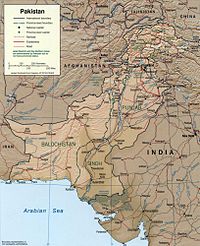
Photo from wikipedia
Wildlife trade is increasingly recognized as an unsustainable threat to primate populations and informing its management is a growing focus and application of primatological research. However, management policies based on… Click to show full abstract
Wildlife trade is increasingly recognized as an unsustainable threat to primate populations and informing its management is a growing focus and application of primatological research. However, management policies based on ecological research alone cannot address complex socioeconomic or cultural contexts as drivers of wildlife trade. Multidisciplinary research is required to understand trade complexity and identify sustainable management strategies. Here, we define multidisciplinary research as research that combines more than one academic discipline, and highlight how the articles in this issue combine methods and approaches to fill key gaps and offer a more comprehensive understanding of underlying drivers of wildlife trade including consumer demand, enforcement patterns, source population status, and accessibility of targeted species. These articles also focus on how these drivers interact at different scales, how trade patterns relate to ethics, and the potential effectiveness of different policy interventions in reducing wildlife trade. We propose priorities for future research on primate trade including expanding from multidisciplinary to interdisciplinary research questions and approaches co‐created by research teams that integrate across different disciplines such as cultural anthropology, ecology, economics, and public policy. We also discuss challenges that limit the integration of information across disciplines to meet these priorities.
Journal Title: American Journal of Primatology
Year Published: 2017
Link to full text (if available)
Share on Social Media: Sign Up to like & get
recommendations!